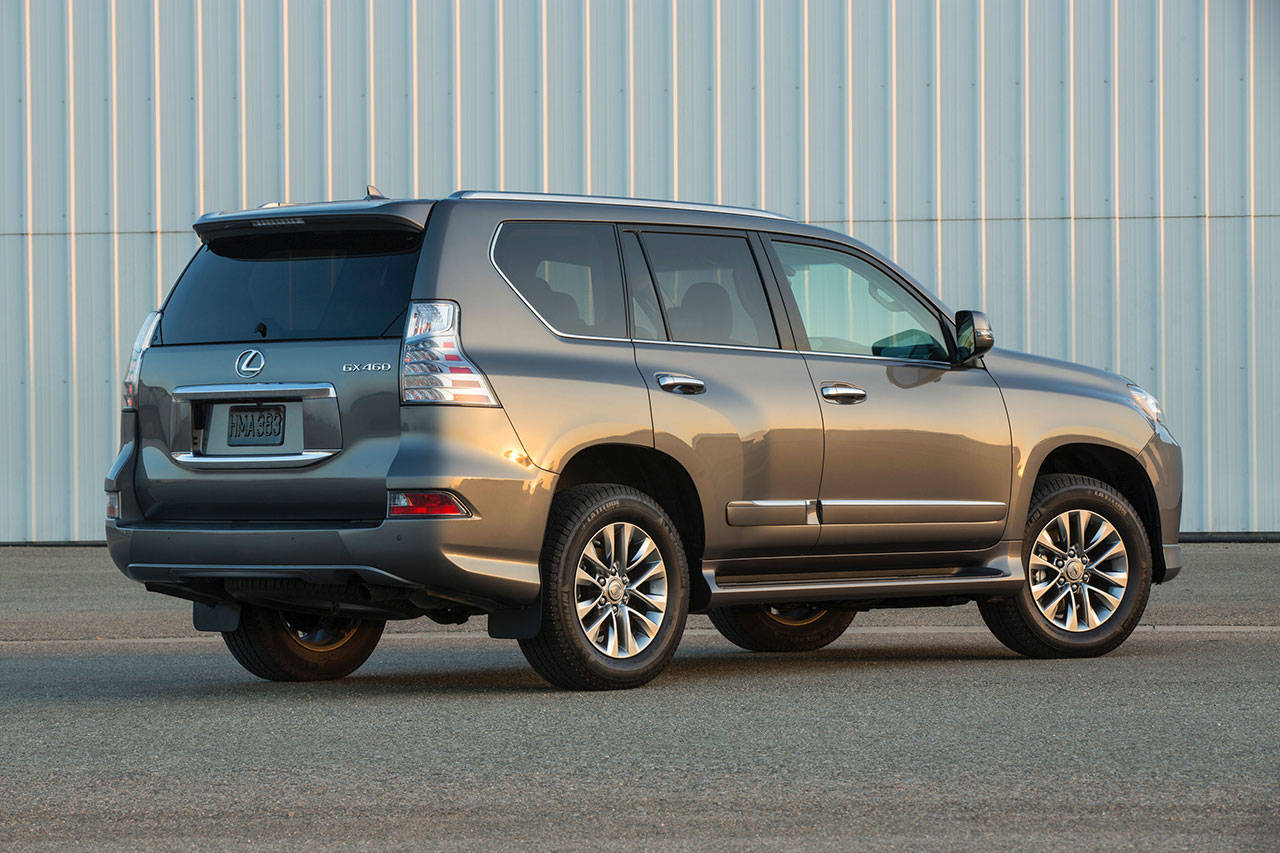When people talk about buying a car, the conversation usually revolves around horsepower, fuel efficiency, styling, comfort, or tech features. While all of these elements are certainly important, one critical aspect that often gets overlooked, yet can significantly impact your financial well-being, is depreciation.
The truth is, the moment you drive a new vehicle off the dealership lot, it starts to lose value. But how much it depreciates—and how fast—can vary dramatically from one model to another. This isn’t just a budgeting concern; it’s a strategic decision that separates a smart investment from a costly mistake.
Depreciation is the single largest cost of vehicle ownership. For most vehicles, it accounts for around 40–50% of the total cost over five years. Some cars can lose over 60% of their value within just a few years, especially those with weak brand reputations, poor reliability, or outdated design.
Others, surprisingly, can retain much of their value due to high demand, durable engineering, and strong emotional or cultural appeal. Understanding which vehicles fall into which category is not only useful for buyers—it’s essential for long-term financial planning.
Many consumers fall into the trap of short-term thinking when purchasing a car. A flashy design, a deep discount, or a persuasive salesperson can sway decisions without considering the vehicle’s resale prospects. However, just because a car is cheap today doesn’t mean it will hold its value tomorrow.
In fact, low-cost vehicles often suffer the fastest depreciation because they lack long-term appeal or have known quality issues. In contrast, some pricier vehicles may justify their higher up-front cost by offering excellent residual value down the line, making them more cost-effective in the long run.
The market value of a vehicle is determined by more than just its MSRP or sticker price. Supply and demand, brand perception, dependability, consumer satisfaction, and even niche enthusiasm (such as off-road or performance communities) play critical roles in determining how well a car holds its value.
Some vehicles manage to remain desirable and relevant years after their release, while others fade into obscurity as soon as a newer model hits the lot. Whether you’re planning to lease, trade in, or sell privately, understanding how value retention works gives you a major edge.
In this article, we explore two distinct groups of vehicles: five that hold their book value remarkably well and five that fall below it almost instantly. These examples have been selected based on trends in resale data, depreciation rates, consumer reports, and real-world market behavior.
Each vehicle tells a different story about what contributes to long-term value, or lack thereof. Some are the result of excellent engineering and brand trust; others are plagued by poor design decisions, reliability concerns, or simply a mismatch with consumer needs.
The goal here isn’t just to tell you what to buy or avoid—it’s to give you insight into how and why vehicles depreciate at different rates. If you’re spending thousands of dollars on a car, wouldn’t you want to make sure that money is being spent wisely?
Whether you’re a first-time buyer, a seasoned investor, or someone planning to trade up in a few years, this information will help you navigate the complex landscape of automotive depreciation with clarity and confidence.
So, let’s break it down. We’ll first explore five vehicles that are considered gold-standard investments in terms of holding their value over time. Then we’ll examine five that, despite their initial appeal, tend to fall flat in the resale market, often becoming money pits for their unsuspecting owners. Think of it as your depreciation roadmap—a guide to what holds up and what crumbles in the ever-changing world of automotive ownership.
ALSO READ: 5 Budget Cars That Feel Solid and 5 That Fall Apart Fast
5 Vehicles That Retain Book Value
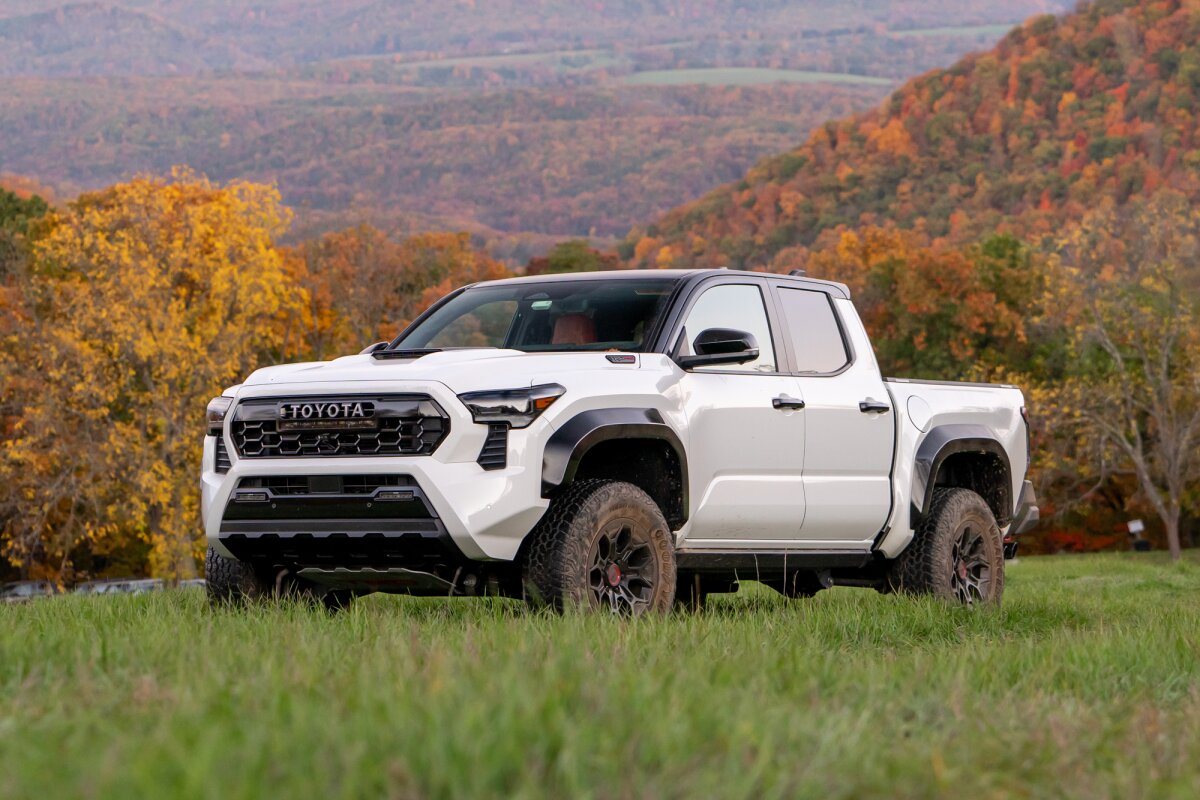
1. Toyota Tacoma
The Toyota Tacoma consistently ranks as one of the best vehicles in terms of long-term value retention. It combines legendary reliability with practical utility and a broad appeal that stretches across both urban commuters and off-road enthusiasts.
The Tacoma holds value so well that, in many cases, lightly used models can sell for nearly as much as brand-new ones. This rare phenomenon is a reflection of the truck’s rock-solid reputation and overwhelming demand in the used vehicle market.
One of the key reasons for Tacoma’s value resilience is its unmatched durability. Toyota has engineered this truck to last well over 300,000 miles with proper care, which is no small feat.
The simple mechanical architecture, proven V6 engine options, and minimal reliance on over-complicated tech make it a favorite among buyers who prioritize longevity over bells and whistles. In the used market, a Tacoma with 100,000 miles doesn’t scare away buyers—it attracts them.
The Tacoma also benefits from a slow refresh cycle. Unlike other manufacturers that radically redesign vehicles every few years, Toyota maintains a more conservative, evolutionary approach.
The Tacoma has looked roughly the same for over a decade, with only incremental design changes. This is a significant advantage when it comes to resale value. A 2015 model doesn’t look drastically different from a 2021 model, which minimizes the perceived obsolescence and sustains its desirability.
Additionally, Tacoma’s wide aftermarket support plays a critical role in keeping demand high. Lift kits, suspension upgrades, camping gear, and rugged modifications are readily available, giving buyers more flexibility to tailor the truck to their specific needs.
Off-road communities frequently choose the Tacoma as a base for building overlanding rigs, further solidifying its value in enthusiast circles. Finally, Toyota’s brand reputation bolsters confidence across all markets.
With high reliability scores, strong owner satisfaction, and a global track record of excellence, the Tacoma is viewed as a low-risk investment. It’s not just a pickup truck—it’s a durable asset, and that perception alone keeps resale prices well above average.

2. Jeep Wrangler
Few vehicles match the Jeep Wrangler in terms of iconic status and consistent resale value. While it’s not the most refined SUV on the road, it’s undoubtedly one of the most recognizable.
Whether new or old, the Wrangler commands a higher resale price due to its unique blend of utility, heritage, and lifestyle branding. It’s not just a vehicle—it’s a statement, and that gives it powerful residual value in the used market.
The Wrangler’s core appeal lies in its unparalleled off-road capabilities. Solid front and rear axles, generous ground clearance, and a plethora of 4×4 configurations make it one of the few factory-built vehicles ready to tackle rugged terrain straight off the showroom floor.
This capability endures through the years, giving used models significant practical value. Buyers seeking off-road thrills often prefer a slightly used Wrangler to a pricier, newer model, keeping resale prices competitive.
Customization potential also boosts the Wrangler’s desirability. Owners regularly upgrade wheels, suspension, bumpers, and even interiors. Jeep’s modular design philosophy allows easy modifications, making used Wranglers more appealing if they’re tastefully customized.
Some buyers even prefer pre-modified models, viewing them as a cost-effective alternative to building their own from scratch. This demand keeps even older units highly sought-after.
Another important aspect of the Wrangler’s enduring value is its cult-like following. Jeep has built a strong community around the Wrangler, with dedicated clubs, events, and lifestyle branding.
It’s more than just marketing—it creates emotional attachment and loyalty. Many owners are repeat buyers, and others purchase used Wranglers just to join the culture. This emotional connection elevates resale value far beyond typical supply-demand dynamics.
Finally, the Wrangler benefits from a consistent design philosophy. Much like the Tacoma, its slow aesthetic evolution means that even decade-old models don’t appear outdated.
Its boxy, military-inspired look is timeless and rooted in function. This familiarity reassures buyers and keeps older models relevant, preserving resale value through generational transitions.
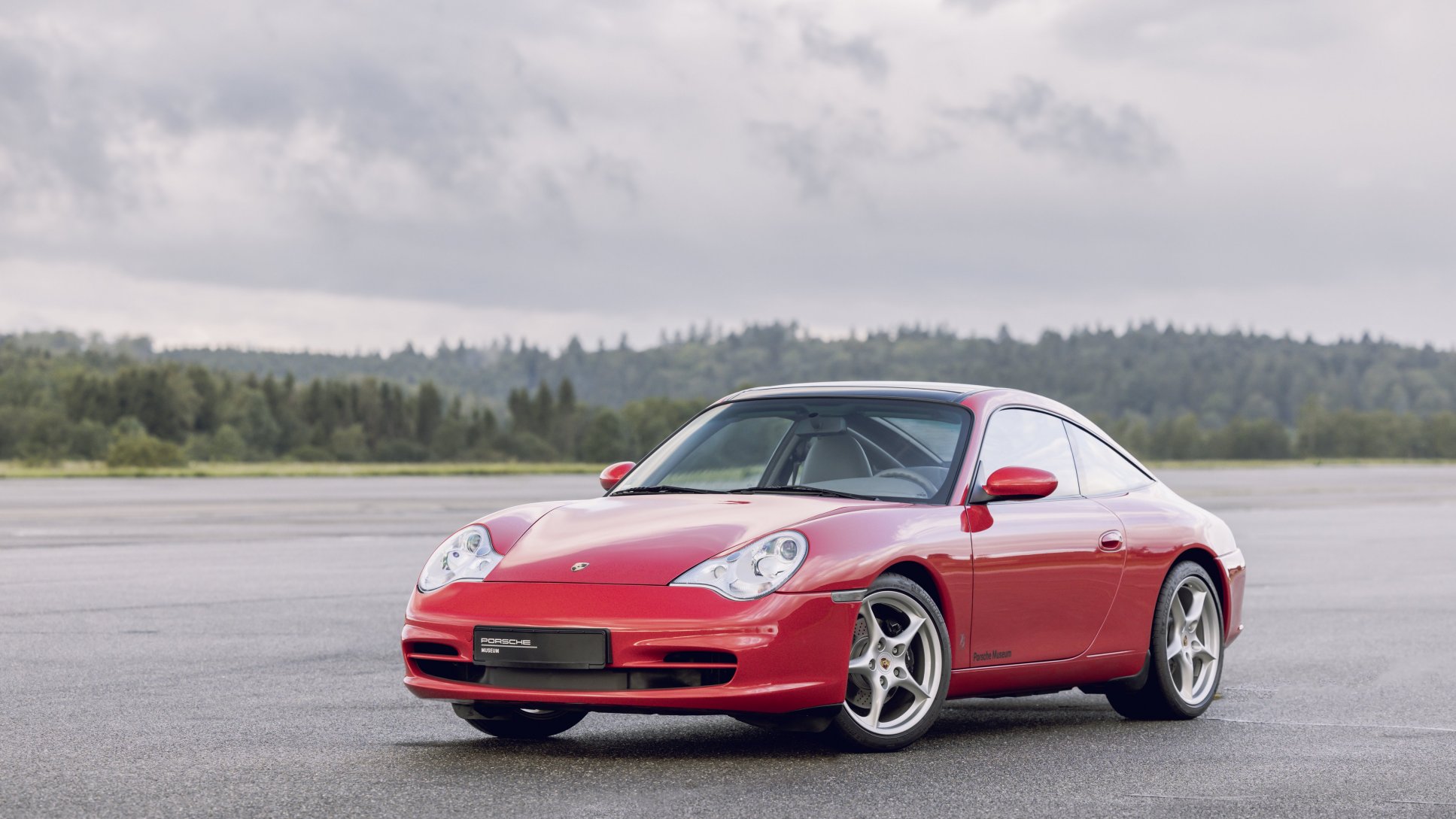
3. Porsche 911
Among sports cars, few rival the Porsche 911 when it comes to value retention. While luxury vehicles often suffer from steep depreciation, the 911 is the exception.
It has managed to hold its value not only due to the prestige of the Porsche badge but also because of the car’s evolutionary design, mechanical excellence, and enduring appeal among driving purists. The 911 is both a high-performance machine and a long-term asset.
The engineering behind the 911 is one of its greatest selling points. Rear-engine layout, near-perfect weight distribution, and precise handling make it a favorite among enthusiasts.
But what makes it hold value is not just performance—it’s consistency. Porsche doesn’t reinvent the wheel with every model year. Instead, they refine it. Buyers who purchase a used 911 know they’re getting a machine that has been perfected over decades.
Rarity also plays a role. While the 911 is not exactly low-volume, Porsche carefully controls production to maintain a degree of exclusivity. Limited-edition trims like the 911 GT3, Turbo S, or Carrera T become instant classics, appreciating in some cases. Even standard models retain strong resale value due to consistent demand from collectors and casual drivers alike. A well-kept 911 is always in the market.
Then there’s the car’s versatility. While many sports cars are weekend-only toys, the 911 is fully capable of daily driving. With a relatively comfortable ride, usable rear seats (for small passengers), and a practical front trunk (frunk), it doesn’t force buyers to compromise too much. This practicality widens the target audience, increasing market demand and therefore propping up resale value.
Moreover, the 911’s status as an automotive icon cements its reputation across generations. The shape has evolved subtly since its inception in the 1960s, which creates timeless appeal.
Older models aren’t viewed as outdated—they’re seen as classics. From air-cooled legends to modern turbocharged marvels, every 911 variant has its following, ensuring value retention across all production eras.
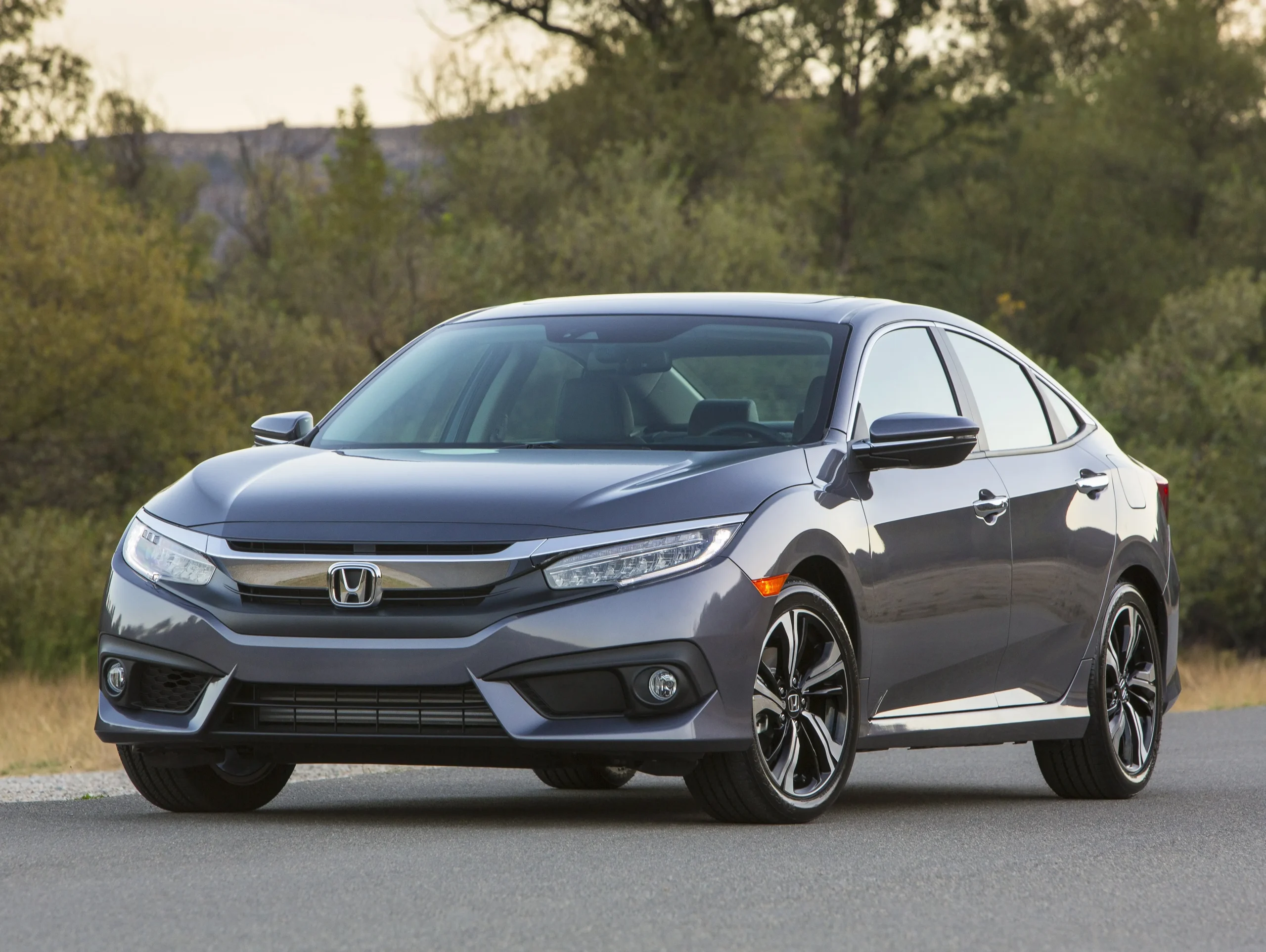
4. Honda Civic
The Honda Civic is one of the most value-retaining sedans on the market and a textbook example of intelligent automotive engineering. For decades, the Civic has maintained its position as a dependable, efficient, and affordable car that appeals to a broad swath of drivers.
This consistent popularity helps keep its resale value well above average, especially compared to rivals in the compact and mid-size segments. Reliability is the Civic’s most powerful asset. Honda’s engineering philosophy emphasizes mechanical simplicity, longevity, and low maintenance.
The Civic delivers on all fronts. With proper upkeep, these cars can run well into the 200,000-mile range with minimal issues. That kind of track record gives buyers confidence, pushing up demand and, by extension, resale value.
Fuel efficiency also factors into the Civic’s value retention. Even as newer models adopt turbocharged engines and hybrid variants, older Civics remain competitive in fuel economy. When gas prices rise, demand for these efficient used vehicles increases sharply. Buyers know they’re not only getting a reliable car—they’re getting one that saves money over time.
The Civic’s design evolution plays a key role as well. Over the years, it has matured from a basic commuter car into a sleek, well-appointed compact that doesn’t feel entry-level. Recent generations feature sharp exterior lines, premium interior materials, and updated infotainment systems. These changes don’t age quickly, meaning a used Civic looks and feels modern longer than its competitors.
Finally, the Civic has a passionate community and broad aftermarket support. From tuner culture to daily drivers, the Civic is customizable, dependable, and well-understood by mechanics. This widespread appeal maintains strong resale value because it doesn’t just satisfy one niche—it satisfies many. Whether you’re a student, parent, or car enthusiast, the Civic remains a smart buy.
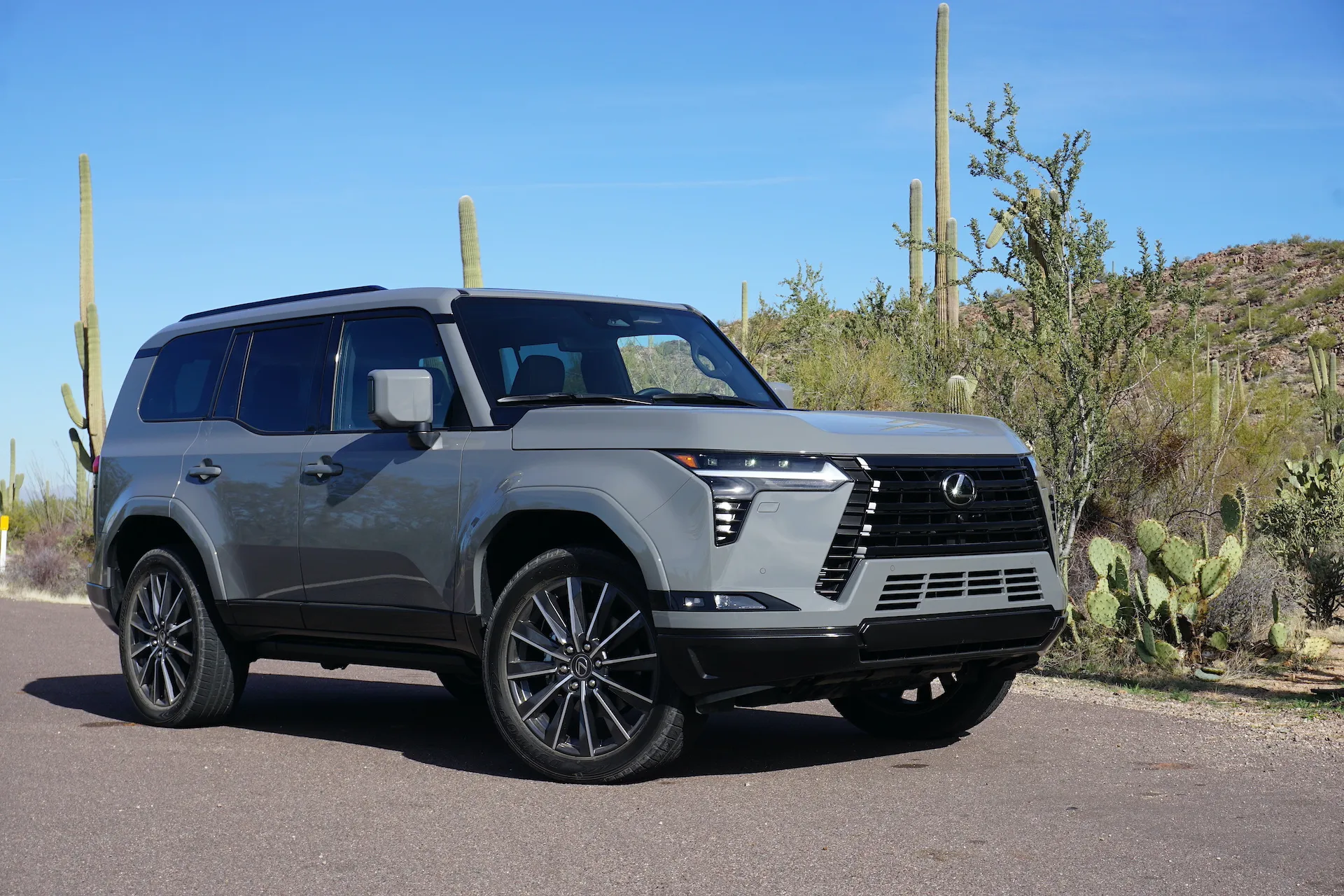
5. Lexus GX
The Lexus GX occupies a unique space in the automotive market, offering luxury, reliability, and genuine off-road capability in a single package. This unusual combination makes it a strong performer in terms of long-term value retention. While most luxury SUVs suffer from steep depreciation, the GX manages to hold its value exceptionally well, in part due to its Toyota roots and low competition in its niche.
The GX is built on the Toyota Land Cruiser Prado platform, which is used worldwide in some of the toughest conditions imaginable. This foundation gives the Lexus GX incredible durability and mechanical resilience.
Buyers understand that beneath the leather and wood trim lies a workhorse capable of tackling both urban and rugged terrain. It’s this duality that ensures strong demand in the used market.
Another reason the GX holds its value is scarcity. Lexus doesn’t sell these in high volumes, and they rarely change dramatically from year to year. This results in a relatively small supply of used models, which increases resale prices due to simple economics. Buyers looking for a dependable luxury SUV with real off-road chops have few alternatives, driving demand higher.
The interior quality of the GX also plays a significant role. Even older models feature high-grade materials, solid construction, and excellent sound insulation. Lexus is known for meticulous craftsmanship, and the GX upholds that standard. This means used models still feel luxurious, which helps support higher asking prices years after their original sale.
Lastly, Lexus’ reputation for customer satisfaction and long-term reliability enhances resale strength. The brand consistently ranks at the top of dependability studies, and that reputation spills over to all models, including the GX.
When combined with its off-road heritage, luxury appeal, and mechanical strength, the GX becomes one of the few premium vehicles that owners can feel confident buying used and selling later at a fair price.
5 Vehicles That Fall Below Book Value Instantly
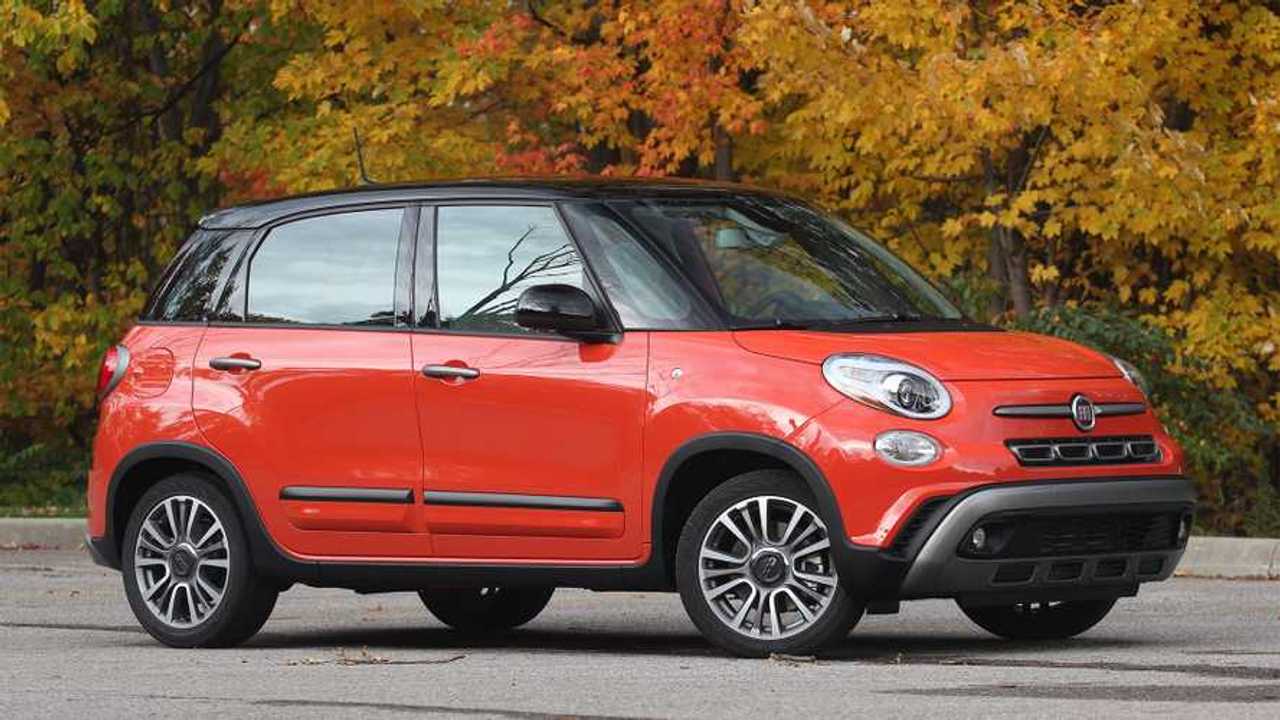
1. Fiat 500L
The Fiat 500L is a prime example of how poor execution can quickly turn a promising concept into a financial disappointment. Launched as a larger, more practical version of the popular Fiat 500, the 500L was meant to appeal to urban families needing space without sacrificing personality.
Unfortunately, it delivered neither refinement nor long-term value, and buyers soon discovered it depreciated faster than almost anything else in its class.
One of the main contributors to the 500L’s poor resale value is its build quality. Consumer feedback and professional reviews have consistently highlighted issues with fit and finish, questionable material choices, and overall cheapness in execution.
These shortcomings manifest early in ownership with rattles, glitches, and premature wear. When these problems are common knowledge in the used market, they cause prospective buyers to walk away—unless the price is dramatically reduced.
Performance and driving dynamics further damage the 500L’s reputation. The vehicle’s small turbocharged engine feels underpowered, particularly when loaded with passengers or cargo.
The steering is numb, and the suspension lacks polish, leading to a clumsy driving experience that doesn’t inspire confidence. In a segment filled with better-handling, more efficient alternatives, the 500L simply fails to compete, leading to stagnant demand and collapsing resale value.
Aesthetically, the 500L’s styling has been widely criticized for its awkward proportions and polarizing design. While Fiat tried to capture the charm of its smaller sibling, the result feels more like a bloated caricature.
In a market where visual appeal can sway resale prices significantly, the 500L’s oddball design limits its desirability to a very narrow demographic. This limited appeal directly impacts how quickly and how steeply it depreciates.
Brand trust is another issue. Fiat’s reputation in the U.S. has been shaky at best. Problems with reliability, a shrinking dealer network, and unclear long-term support cast a shadow over all their models.
When a vehicle lacks both substance and strong brand backing, its resale prospects are dismal. In the case of the 500L, that means values fall far below book estimates, sometimes within the first year of ownership.
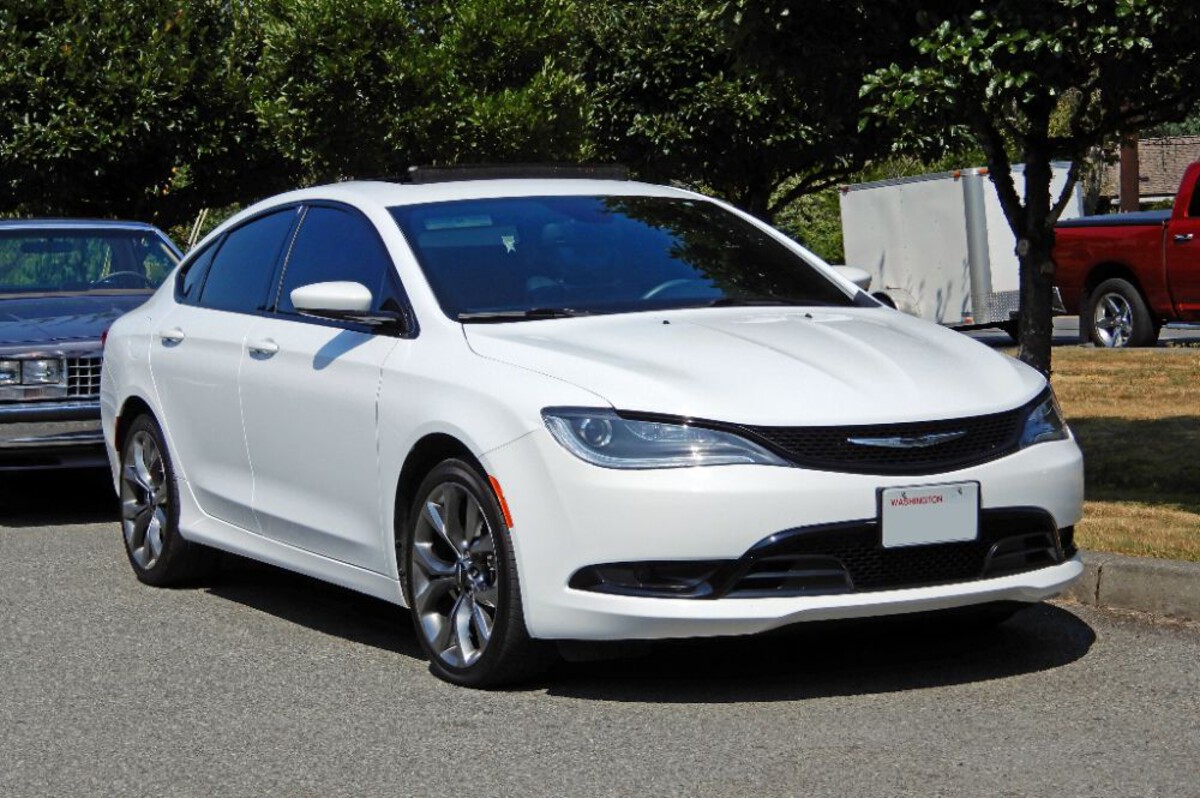
2. Chrysler 200
The Chrysler 200 is a textbook case of poor product-market fit, and its swift depreciation reflects that. Initially positioned as Chrysler’s answer to the highly competitive midsize sedan segment, the 200 suffered from identity confusion, a lack of innovation, and quality issues that quickly rendered it obsolete.
As a result, its value plummeted nearly as fast as it entered the market, creating major losses for early adopters. A significant problem with the Chrysler 200 was its uninspired performance. Though Chrysler offered both four-cylinder and V6 variants, the powertrain lacked refinement, and the transmission was a frequent source of complaints.
The 9-speed automatic transmission, in particular, was plagued with shift logic issues and mechanical failures, undermining any credibility the car might have had as a reliable daily driver. This created distrust in the resale market and discouraged repeat buyers.
Interior quality was another sore point. While the design was stylish, the materials used were often subpar. Hard plastics, early wear and tear on upholstery, and inconsistent panel gaps gave the car a budget feel that clashed with its marketing as a premium offering.
This inconsistency made it difficult to place the vehicle within the competitive landscape—too expensive to compete with base models, not good enough to rival higher trims. The Chrysler 200’s abrupt discontinuation in 2017 only exacerbated its depreciation.
Once a car is pulled from production, especially without a clear successor, it sends a message that the manufacturer is abandoning the platform. This spooks used buyers who worry about long-term support, parts availability, and service continuity. As confidence drops, so do resale prices—often falling below book value in just a year or two.
Lastly, the 200 was widely used in rental fleets, which further diluted its image. High fleet usage typically floods the used market with devalued units and undermines exclusivity.
Rental-spec models tend to be lower trims with minimal features and high mileage, which tanks their value even further when sold. Combined with an already fragile market position, this glut helped ensure that the Chrysler 200 became a financial liability for anyone buying new.
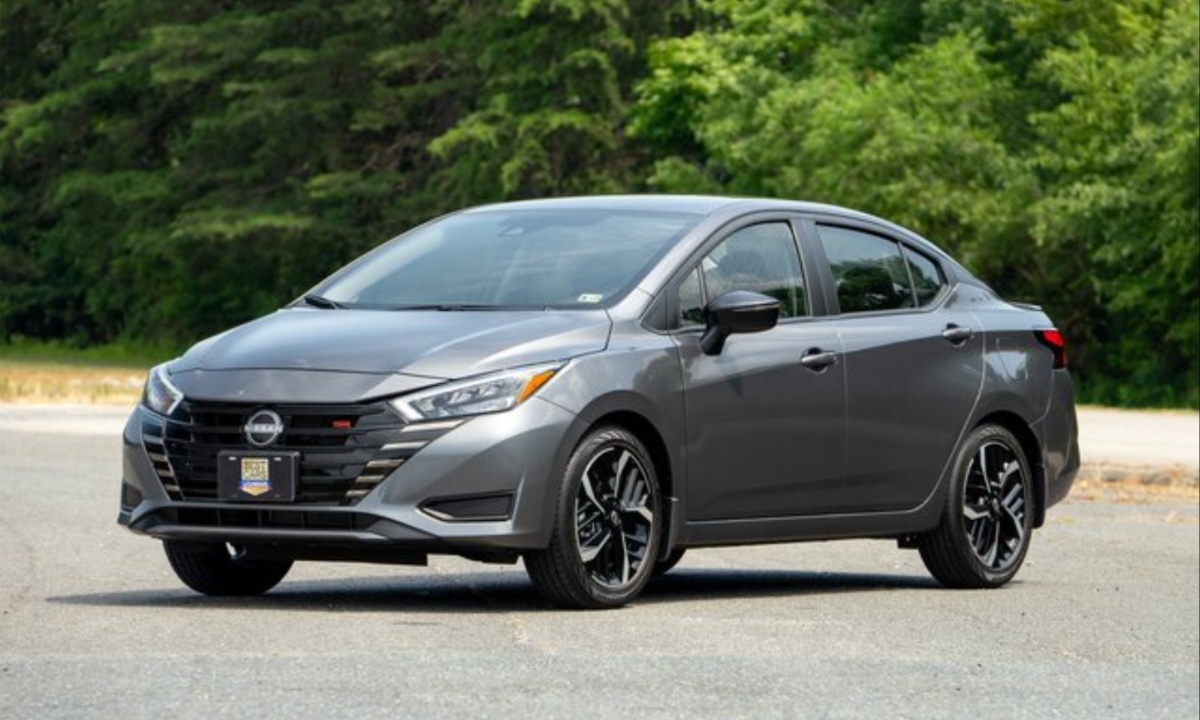
3. Nissan Versa
The Nissan Versa is often celebrated as one of the most affordable new cars available, but its value proposition doesn’t hold up in the long run. Despite its low MSRP and reputation for basic utility, the Versa suffers from extreme depreciation due to quality concerns, fleet saturation, and an overall lack of desirability. Buyers are often shocked at how little their car is worth just a few years after driving it off the lot.
One of the primary issues lies in its cost-cutting construction. While affordability is a key selling point, the Versa’s build quality suffers dramatically for it.
Cheap interior materials, minimal insulation, and dated technology make it feel disposable rather than dependable. These factors don’t age well, and used buyers often look elsewhere for a more refined alternative—even if it costs a little more.
Performance is another major drawback. The Versa’s small engine and sluggish CVT transmission make it ill-suited for highway driving or spirited commuting.
Acceleration is tepid at best, and road noise becomes intrusive at high speeds. These shortcomings make the Versa less versatile and enjoyable than its competitors, meaning used versions are frequently bypassed in favor of more balanced offerings like the Honda Fit or Toyota Yaris.
Compounding its depreciation is the car’s presence in rental and fleet service. Thousands of Versas have been cycled through rental fleets and ride-share programs, creating a saturated used market.
Fleet sales typically result in low resale values, particularly when the vehicles are sold in bulk and listed at auction. The resulting price pressure drives down the perceived value of privately owned models as well.
Finally, the Versa lacks emotional or aspirational appeal. While some cars create a connection with their drivers, the Versa is often purchased out of sheer necessity.
That utilitarian nature, while commendable in theory, becomes a disadvantage in the used market. With little brand passion, minimal style, and few stand-out features, the Versa depreciates faster than most subcompacts, often falling below book value within its first two years.
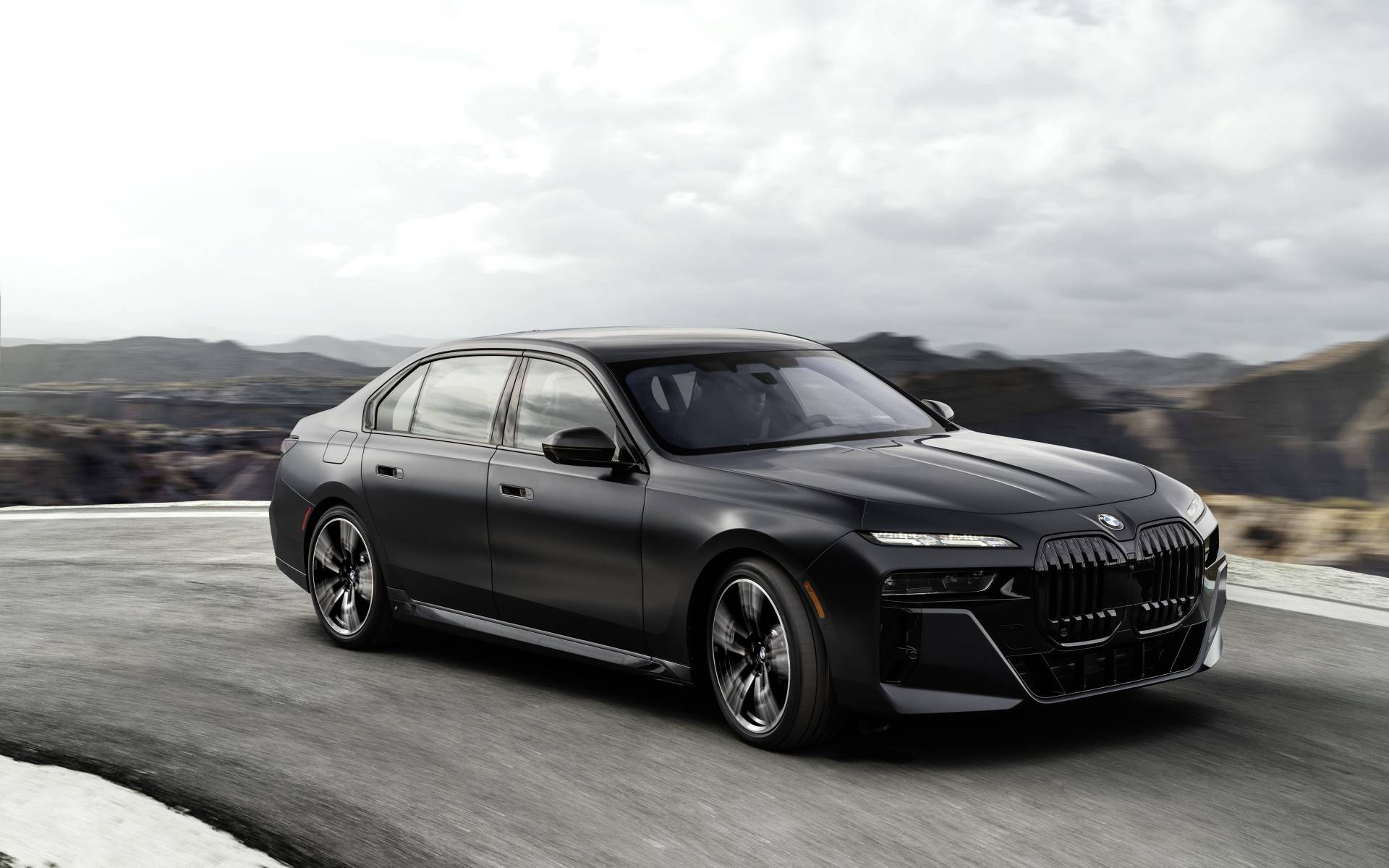
4. BMW 7 Series
The BMW 7 Series is the epitome of luxury gone financially wrong in the used market. While it offers exceptional comfort, cutting-edge technology, and world-class performance, it also comes with massive depreciation. Within three years, many 7 Series models lose over half their original value, making them a cautionary tale for anyone thinking prestige guarantees financial sense.
The complexity of the vehicle is a major contributor to this depreciation. Packed with electronics, air suspension systems, infotainment tech, and advanced driver aids, the 7 Series is expensive to maintain once the warranty ends.
Used buyers often fear the high cost of ownership, and rightly so—repairs on luxury tech are costly and sometimes finicky. This risk is factored into resale prices, dragging them below book value.
Luxury car depreciation is also driven by rapid innovation. BMW constantly updates its lineup, which means that even recent models feel outdated quickly.
As newer generations hit the market with better tech, enhanced efficiency, and improved interiors, older 7 Series units are left behind. The pace at which luxury sedans evolve contributes to how quickly they lose their appeal—and their resale value.
The status-driven nature of the 7 Series also works against it in the used market. Buyers of flagship luxury sedans often want the latest model, not a hand-me-down.
Because so much of the 7 Series’ value is tied to its image, once that image fades, so does its price tag. Used luxury sedans frequently struggle to find buyers who want high-end features without the high-end baggage.
Lastly, market trends are shifting away from sedans in favor of SUVs and crossovers. The declining demand for large executive sedans like the 7 Series means that even pristine examples fetch less than expected.
With limited appeal outside of a shrinking niche, the 7 Series quickly loses its luster—and its value—once it enters the resale arena.
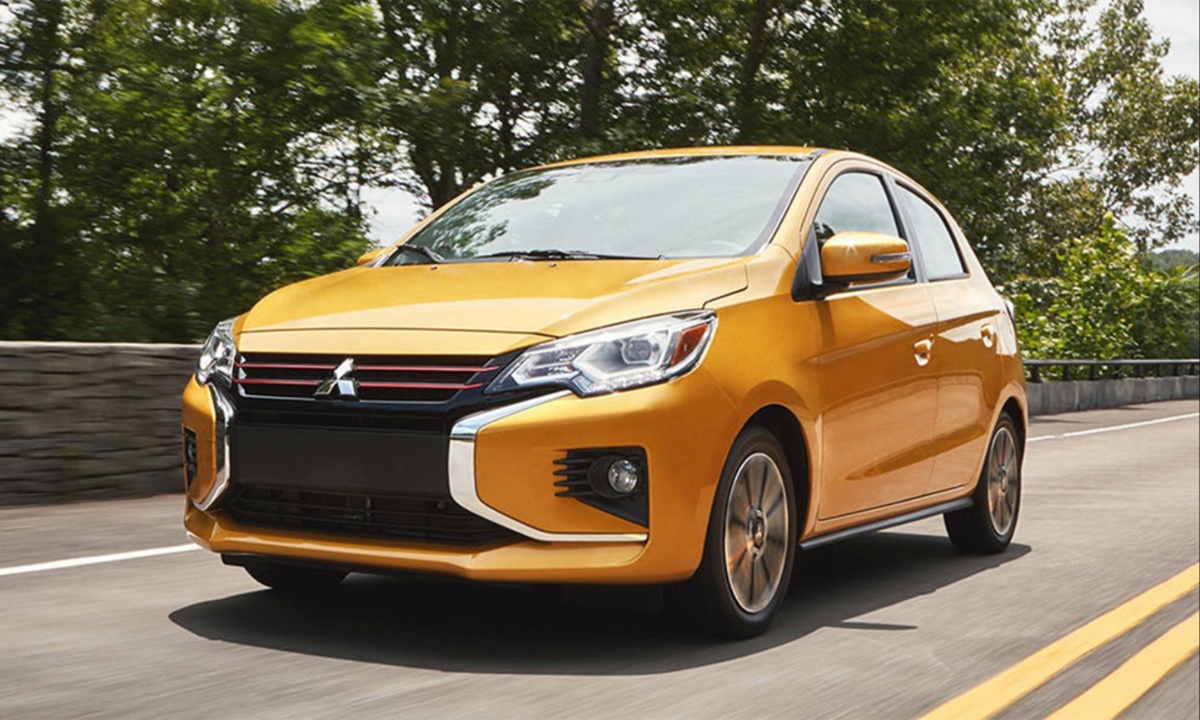
5. Mitsubishi Mirage
The Mitsubishi Mirage is marketed as one of the most affordable and efficient new cars on the market, but it’s also one of the fastest to fall below book value.
Despite its tiny footprint and frugal fuel consumption, the Mirage depreciates rapidly due to its low-quality build, weak performance, and minimal brand confidence. It’s a textbook case of “you get what you pay for”—and not much more.
First and foremost, the Mirage is underpowered. Its three-cylinder engine produces meager horsepower, and while that might be tolerable in city traffic, it becomes dangerous on the highway.
The CVT transmission doesn’t help matters, as it delivers sluggish, droning acceleration. Buyers quickly realize the car is severely limited in what it can handle, which turns off potential second-hand shoppers.
Interior comfort is also lacking. The Mirage is extremely basic, with minimal amenities, uncomfortable seating, and dated infotainment options. Even newer models feel ten years behind competitors. When someone is shopping in the used market, they’re often comparing vehicles across model years. The Mirage, even when relatively new, can’t compete in terms of experience or features.
Durability is another concern. While Mitsubishis of the past were known for ruggedness, the Mirage has suffered from inconsistent quality control and early signs of wear. Owners report issues ranging from suspension problems to cabin rattles. These concerns damage buyer confidence and create a reputation that the car is “disposable,” further plummeting its value.
The brand’s position in the U.S. market doesn’t do the Mirage any favors. Mitsubishi’s shrinking dealer network, lack of new product investment, and uncertain long-term support all cast a shadow over its vehicles.
Buyers are hesitant to take a risk, even at bargain-bin prices. As a result, used Mirages often sell for well below their already-low book value, making them a poor financial decision despite the initial affordability.
ALSO READ: 5 Reliable Used Cars Under $10K and 5 That’ll Cost More Than They’re Worth
Choosing Value Over Flash
In the ever-evolving landscape of automotive ownership, value retention remains one of the most underestimated yet essential aspects to consider. The reality is clear: depreciation can either be your silent enemy or your financial ally. It may not grab headlines like 0–60 times or tech features, but it will quietly dictate how much of your investment you’ll recover when the time comes to sell or trade in your vehicle.
The difference between choosing a car that retains its value versus one that plummets in worth can easily amount to thousands of dollars—money that could otherwise be used toward your next vehicle, a down payment, or even a vacation.
Throughout this comparison, a few themes have consistently emerged. Vehicles that retain their book value—like the Toyota Tacoma, Jeep Wrangler, and Porsche 911—share common traits. They offer reliability, practical utility, timeless design, and broad market appeal.
These are not just products; they’re symbols of trust, engineering excellence, and community culture. Their reputations are backed by years, sometimes decades, of consumer satisfaction and brand consistency. In many cases, the upfront cost is higher, but what you’re buying is not just a car, but peace of mind and future financial flexibility.
On the flip side, vehicles that fall below their book value almost instantly are generally plagued by inconsistency, poor quality, or failed market positioning.
Cars like the Fiat 500L or Chrysler 200 are cautionary tales in automotive design and branding. They may seem like a good deal initially—especially with heavy dealer incentives or low sticker prices—but the resale market tells a different story.
These cars are often shunned by used buyers, flooded in auction markets, or abandoned by their manufacturers. The result? A vehicle that rapidly depreciates, often leaving its owners upside down on their loans or taking substantial losses on resale.
One of the most important takeaways from this discussion is the need for a long-term mindset when purchasing a vehicle. It’s tempting to chase short-term savings or visual appeal, but truly smart buyers look beneath the surface.
A vehicle’s value isn’t just in how it performs today—it’s in how well it holds up, both mechanically and financially, over the next several years. Vehicles that are built to last, backed by strong resale demand, and supported by robust brand reputations will always be a safer, more strategic investment.
The used vehicle market is a reflection of what the broader driving public values. When you see a specific model consistently selling close to book value—or even appreciating—you can safely assume it’s doing something right. Whether it’s a timeless design, legendary reliability, or multi-purpose functionality, that vehicle has earned its place in the automotive hall of fame.
Meanwhile, vehicles that tank in resale often suffer from a combination of flaws—some fixable, others fatal—that leave them forgotten or avoided on the resale lot.
In closing, if you’re in the market for a car, take a step back from the showroom lights and glossy brochures. Ask yourself not only what you want today, but what will still be a smart decision two, five, or even ten years down the line. Choosing the right vehicle isn’t just about style or status—it’s about longevity, utility, and financial sensibility.
The difference between a car that retains value and one that doesn’t is more than just a number—it’s the difference between short-term satisfaction and long-term stability. Let that guide your decision, and you’ll thank yourself every mile down the road.

